The Legacy Continues
Ho‘okĀhi ka ‘ilau like ana
Wield the paddles together
-
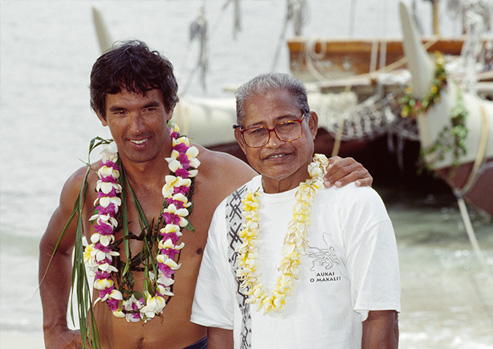
Nainoa Thompson and Mau Piailug, ca. 1998
Courtesy Monte Costa
In 1976, in an effort to reintroduce the lost art of Native Hawaiian voyaging, Nainoa Thompson began his search for a master navigator to learn from. He eventually persuaded Mau Piailug of Satawal, Federated States of Micronesia, to break with custom and teach an outsider the tradition of wayfinding without instrumentation.
-
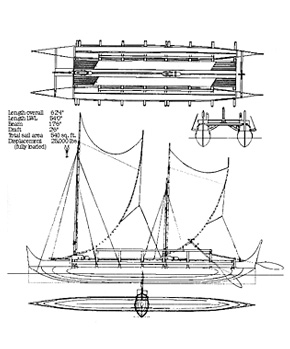
Plans for the Hōkūle‘a canoe, ca. 1973
The Polynesian Voyaging Society has licensed the use of the Trademarked image of Hōkūle‘a—for temporary, exclusive, educational purposes only—to the National Library of Medicine
Black and white design drawings of the Hōkūle‘a show multiple views of the canoe and list measurements. “Length overall 62’4”. Length LWL 54’0”. Beam 17’6”. Draft 2’6”. Total sail area 540 sq. ft. Displacement (fully loaded) 25,000 lbs.”
-
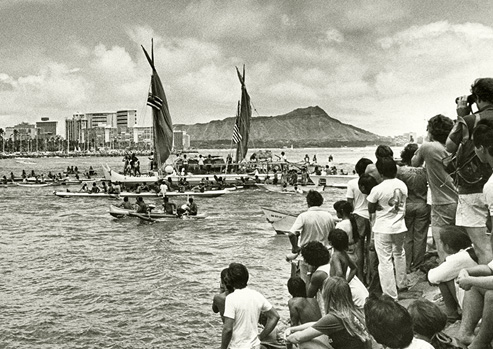
Hōkūle‘a returning from its first voyage to Tahiti, 1976
Courtesy Monte Costa
In 1980, Thompson became the first Hawaiian since the 14th century to practice wayfinding on long distance ocean voyages, when he navigated the canoe Hōkūle‘a from Hawai‘i to Tahiti and back. Beginning in 1985, he traveled more than 16,000 miles across Polynesia to Aotearoa (New Zealand) and home again. The journey took two years. Since then, he has trained others, leading a revival of traditional voyaging arts throughout the Pacific. Because of the success of these efforts, voyaging now serves as a model for other efforts to improve the health of Native Hawaiians through the revitalization of cultural traditions.
-
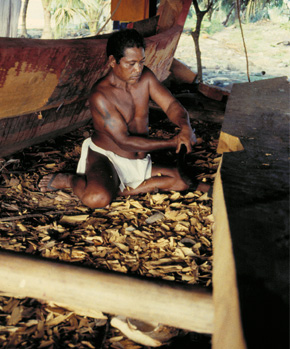
Mau Piailug building a canoe, 1984
Courtesy Steve Thomas Traditional Micronesian Navigation Collection, University of Hawai‘i, Mānoa, Hamilton Library, Pacific Collection
Micronesian wayfinder, Mau Piailug, sits on top of wood shavings with a carving instrument in his hand as he constructs a canoe.
-
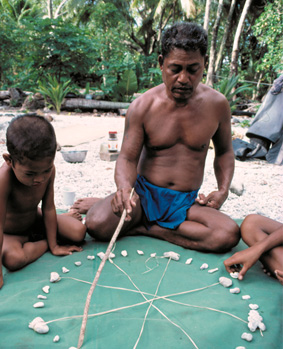
Mau Piailug, using a star compass to teach navigation to his son, 1983
Courtesy Steve Thomas Traditional Micronesian Navigation Collection, University of Hawai‘i, Mānoa, Hamilton Library, Pacific Collection
Conclusion
Hōkūle‘a and her sister vessels will circumnavigate the globe in an eight-year year journey of learning. The mission is to navigate toward a healthy and sustainable future for the Hawaiian Islands, and for the earth, by sharing knowledge of our oceans, lands, and peoples. The core message is mālama honua, to care for Island Earth — the natural environment and all humankind.







